Podcast: Play in new window | Download
Subscribe: Apple Podcasts | RSS
The Mexican state of Sonora is located in the northwestern part of the republic and borders the Mexican states of Chihuahua, Sinaloa, Baja California as well as the American states of Arizona and New Mexico. It is home to a diverse landscape of deserts, high mountains, fertile river valleys and beautiful beaches. It is also home to three million people and many interesting legends. Here are a few:
1. Bobok the Toad and the End of the Great Drought
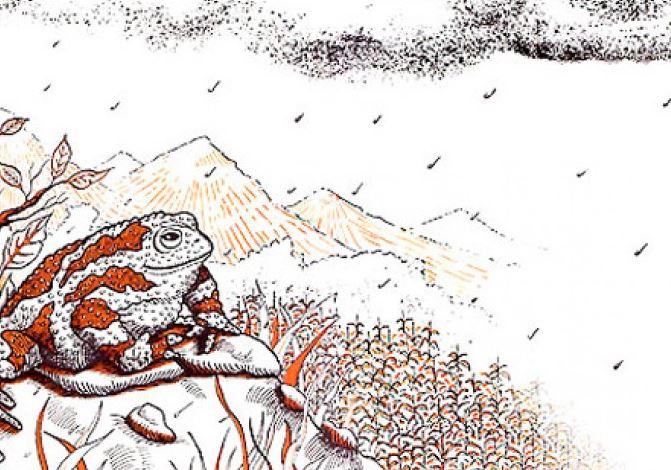 Many centuries before the Spanish arrived, the Yaqui people lived in the deserts of the modern-day Mexican state of Sonora in eight fairly large towns. The towns were like little independent kingdoms that lived peacefully with each other, sharing a common language and culture, along with some natural resources like water and hunting areas. A long time ago, according to legend, the Yaquis were suffering from a great drought and even their wells and springs were drying up. Famine and disease soon spread throughout the Yaqui homeland. When the situation became dire, the rulers of the eight Yaqui cities got together to try to come up with a solution to solve their crisis of lack of water. They agreed that they would send a sparrow to fly to the heavens and talk to Yuku, the rather temperamental god of rain who lived in a large house in the clouds. The bird flew to Yuku and asked him to send rain down to earth because the Yaquis were thirsty, and their lands were drying up. The rain deity reluctantly agreed but felt a little bothered by the request. The sparrow happily flew back to earth but never made it back home. It was struck by lightning and carried off by the fierce winds of the storm. Because Yuku felt no need to fulfill a promise to a dead bird, he ceased the rain before any of it reached the parched earth and the desperate humans who so needed it. When the sparrow never returned and the rain amounted to nothing, the 8 great rulers of the Yaqui territory gathered together again to come up with another solution. They decided to send a stronger bird, a swallow, to talk to Yuku. The valiant bird flew until it met the rain god in his great house in the sky and begged him to give the Yaquis some water. Yuku replied without hesitation:
Many centuries before the Spanish arrived, the Yaqui people lived in the deserts of the modern-day Mexican state of Sonora in eight fairly large towns. The towns were like little independent kingdoms that lived peacefully with each other, sharing a common language and culture, along with some natural resources like water and hunting areas. A long time ago, according to legend, the Yaquis were suffering from a great drought and even their wells and springs were drying up. Famine and disease soon spread throughout the Yaqui homeland. When the situation became dire, the rulers of the eight Yaqui cities got together to try to come up with a solution to solve their crisis of lack of water. They agreed that they would send a sparrow to fly to the heavens and talk to Yuku, the rather temperamental god of rain who lived in a large house in the clouds. The bird flew to Yuku and asked him to send rain down to earth because the Yaquis were thirsty, and their lands were drying up. The rain deity reluctantly agreed but felt a little bothered by the request. The sparrow happily flew back to earth but never made it back home. It was struck by lightning and carried off by the fierce winds of the storm. Because Yuku felt no need to fulfill a promise to a dead bird, he ceased the rain before any of it reached the parched earth and the desperate humans who so needed it. When the sparrow never returned and the rain amounted to nothing, the 8 great rulers of the Yaqui territory gathered together again to come up with another solution. They decided to send a stronger bird, a swallow, to talk to Yuku. The valiant bird flew until it met the rain god in his great house in the sky and begged him to give the Yaquis some water. Yuku replied without hesitation:
“Go without concern and return to your chiefs and rest assured that the rain will come after you.”
The swallow headed back to earth satisfied with Yuku’s promise, but like the sparrow, it was caught by the wind and struck by lightning. No more was heard of the bird and not a drop of water fell to the ground.
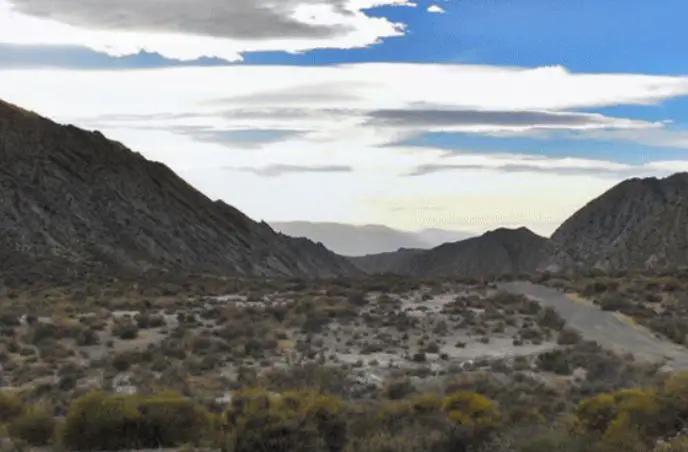 The eight Yaqui rulers, in desperation, opted for another messenger, Bobok the toad, who lived in Bahkwam, a swampy shallow lake, now completely dry. The chiefs met him in Vícam, a town that still exists near modern-day Guaymas. There they entrusted him with the mission. Before he could meet the rain god Yuku, Bobok visited an old sorcerer who lived outside of town. The old Yaqui magician gave the toad a pair of bat wings so he could fly up to the cloudy kingdom of Yuku to plead with the rain deity. When he made it up to the clouds, Bobok the toad begged the rain god.
The eight Yaqui rulers, in desperation, opted for another messenger, Bobok the toad, who lived in Bahkwam, a swampy shallow lake, now completely dry. The chiefs met him in Vícam, a town that still exists near modern-day Guaymas. There they entrusted him with the mission. Before he could meet the rain god Yuku, Bobok visited an old sorcerer who lived outside of town. The old Yaqui magician gave the toad a pair of bat wings so he could fly up to the cloudy kingdom of Yuku to plead with the rain deity. When he made it up to the clouds, Bobok the toad begged the rain god.
He said, “Sir, please don’t treat the Yaquis so badly. Send us some water to drink because we are all thirsty.”
Yuku responded in the same way that he did with the sparrow and the swallow. Because he was so bothered yet again, Yuku wanted to kill the toad as he had gotten rid of the pesky birds. So Bobok the toad pretended to leave the kingdom of the clouds but instead hid. Suddenly, the sky darkened, lightning flashed across the skies, the winds blew with fury and it began to rain. Finally, the water reached the ground but, unknown to the god Yuku, the rain did not touch the toad. Bobok rose much higher than the rain as he started croaking. Yuku listened to the toad and made it rain again. The batwinged toad was silent and the rain stopped. After a few moments, Bobok resumed his chant and threw himself to the ground. The rain god sent a deluge to kill him, but he did not
ind the toad, and thus the water moistened the entire Yaqui territory.
The storms filled the wells again and quenched the Yaquis’ thirst. With this overabundance of water, the Yaqui River was born. Suddenly the toads were numerous, and all sang happily. Bobok returned the borrowed wings to the old magician and went back to live in peace in the now-wet swamps at Bahkwam.
2. The Ghosts of Magdalena de Kino
On the road from the border town of Nogales to the state of Sonora’s capital, Hermosillo, is a small colonial town called Magdalena de Kino. The first mission there was founded in 1687 by Father Eusebio Francisco Kino, the man for whom the city is named. Father Kino is buried there at the old mission. Although the town has a current population of about 23,000, because of its age and because it has served as a crossroads for many years, Magdalena de Kino is home to many ghosts and other assorted paranormal activity. Here are three of the most popular ghost stories coming from this town.
The first ghost story takes place in the Extremadura Cemetery. A middle-aged man named Héctor Toribio Montes de Oca was at a local cantina drinking alongside the town’s gravedigger, Camilito Cienfuegos. Don Héctor said to the gravedigger that he couldn’t believe that anyone would want to work at a cemetery because of the possibility of having bad things happen to him while there. The cemetery worker assured Señor Montes that there was nothing to worry about because the dead could never harm anyone and that he would be happy to show him around his workplace. So, Montes agreed and after some light drinking, he accompanied Cienfuegos to the Extremadura Cemetery. It was night and there was a slight crescent moon making the evening especially dark. While they were walking outside the cemetery walls, they heard voices that were coming closer to them. They were the voices of people speaking an indigenous language that neither of the men could understand. Suddenly, three shadowy figures jumped Señor Montes and yelled at him in that unknown language. He ran away, leaving the gravedigger there, a bit shocked, as he saw the shadowy figures disappear. Montes ran to his mother’s house and barricaded himself there. He wouldn’t leave that place for months. His elderly mother knew him well and asked him if there was more to this story. Montes confessed that when he was a teenager a wealthy hacienda owner paid him a bounty for killing an Indian family that used to raid the hacienda’s lands to steal food and livestock. He put the bodies in a mass grave in the desert and told no one except for the hacienda owner. After confessing this to his mother, Montes lived the rest of his life as an alcoholic wandering the streets of Magdalena de Kino. He was unable to live with himself for the murders he committed many years before and was always on the lookout for those indigenous ghosts who he knew were still around to torment him.
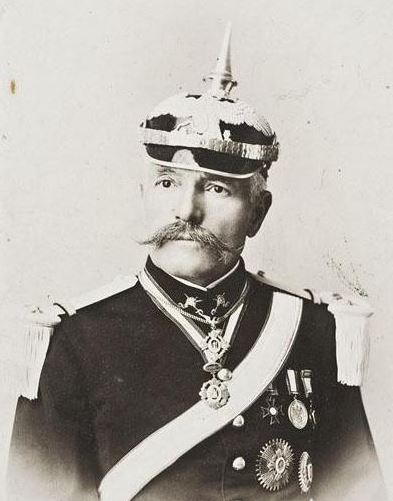 The second ghost story from this small colonial town involves a Russian immigrant and his wife and their beautiful home on Cinco de Mayo Avenue. In the 1860s a man by the name of Emil Kosterlitzky joined the Imperial Russian Navy and deserted in Venezuela. He made his way up to Mexico and ended up in Sonora. In 1871, Kosterlitzky joined the Mexican army to fight in the Mexican Apache Wars and eventually attained the rank of colonel. In 1913 the colonel and his wife, Francesca, bought land in town and decided to build a grand house. Almost immediately after the house was built, Kosterlitzky was captured by revolutionaries and taken prisoner. He was transferred to a jail in Nogales and was released in 1914. He then took his wife and children and moved to Los Angeles, California where he lived until his death in 1928. During the entire time of their exile in the United States, Kosterlitzky’s wife had been in touch with the woman watching their home, a friend named Dionisia. Francesca Kosterlitzky knew she would never return to their beautiful home but promised after death that she and her husband Emil would never leave the earth and would live as spirits inside the house. True to her word, people have seen two European-looking people in early 20th Century dress walking around the house as if they live there and do not know they are dead.
The second ghost story from this small colonial town involves a Russian immigrant and his wife and their beautiful home on Cinco de Mayo Avenue. In the 1860s a man by the name of Emil Kosterlitzky joined the Imperial Russian Navy and deserted in Venezuela. He made his way up to Mexico and ended up in Sonora. In 1871, Kosterlitzky joined the Mexican army to fight in the Mexican Apache Wars and eventually attained the rank of colonel. In 1913 the colonel and his wife, Francesca, bought land in town and decided to build a grand house. Almost immediately after the house was built, Kosterlitzky was captured by revolutionaries and taken prisoner. He was transferred to a jail in Nogales and was released in 1914. He then took his wife and children and moved to Los Angeles, California where he lived until his death in 1928. During the entire time of their exile in the United States, Kosterlitzky’s wife had been in touch with the woman watching their home, a friend named Dionisia. Francesca Kosterlitzky knew she would never return to their beautiful home but promised after death that she and her husband Emil would never leave the earth and would live as spirits inside the house. True to her word, people have seen two European-looking people in early 20th Century dress walking around the house as if they live there and do not know they are dead.
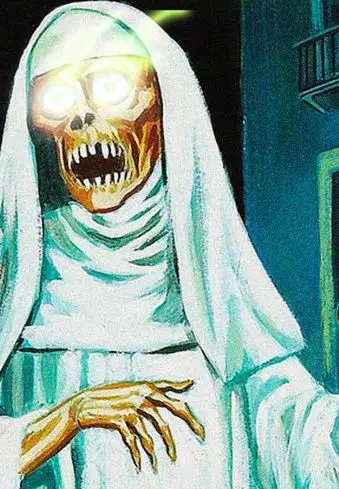 The third ghost story from Magdalena de Kino involves a little girl who was scared by an earthquake. In 1911 the small town was rocked by a very intense shaking which caused great damage and traumatized the population. Immediately after the quake, many people took refuge in the church, fearing aftershocks. One of the people huddling in the church was the 6-year-old Lupita Morales from the La Industria neighborhood. When the townsfolk felt it was safe to leave the church they emerged and noticed newly formed cavities in the hills just outside of town. The caves fascinated the young Lupita and as she grew up, she started to explore them. She was convinced that the caves connected to deeper underground tunnels that would lead to some sort of other world beneath the earth. She explored the cave system so much that she decided to move to the caves and live in them when she got older. As an adult Lupita became known as Loisa del Indio and she was known as an eccentric and a hermit. When she would come into town, she was seen walking about dressed in white robes. If anyone came near her caves, she would curse them and throw rocks at the intruders. People knew better than to bother her and left Loisa del Indio alone. After some time, people stopped seeing her about town and assumed she had died. People to this day claim to see her in her old neighborhood of La Industria floating off the ground and scaring children, still angry and still dressed in her characteristic white robes.
The third ghost story from Magdalena de Kino involves a little girl who was scared by an earthquake. In 1911 the small town was rocked by a very intense shaking which caused great damage and traumatized the population. Immediately after the quake, many people took refuge in the church, fearing aftershocks. One of the people huddling in the church was the 6-year-old Lupita Morales from the La Industria neighborhood. When the townsfolk felt it was safe to leave the church they emerged and noticed newly formed cavities in the hills just outside of town. The caves fascinated the young Lupita and as she grew up, she started to explore them. She was convinced that the caves connected to deeper underground tunnels that would lead to some sort of other world beneath the earth. She explored the cave system so much that she decided to move to the caves and live in them when she got older. As an adult Lupita became known as Loisa del Indio and she was known as an eccentric and a hermit. When she would come into town, she was seen walking about dressed in white robes. If anyone came near her caves, she would curse them and throw rocks at the intruders. People knew better than to bother her and left Loisa del Indio alone. After some time, people stopped seeing her about town and assumed she had died. People to this day claim to see her in her old neighborhood of La Industria floating off the ground and scaring children, still angry and still dressed in her characteristic white robes.
3. The Reptilian Man
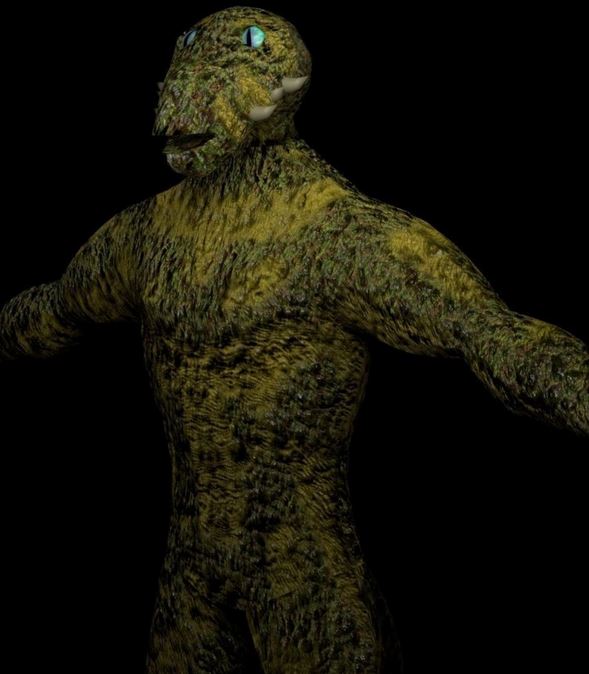 This story is part urban legend, part internet myth and part cryptid sighting. Between the years 2000 and 2004 there were many reports of a strange creature sighted near San Luis Río Colorado a city of a quarter of a million people in the far northwestern corner of the state of Sonora. San Luis is right on the Mexican part of the Colorado River just across the border it shares with the US state of Arizona. It is mostly an agricultural community at the edge of one of North America’s harshest deserts, the Desierto de Altar, where summer temperatures can push beyond 120°. Some believe that the inhospitable territory outside of town – which is largely unexplored and rarely visited – is home to a yet unknown creature that is part man and part reptile. This being has been described as being about the size of a man, green and scaly in appearance and walking upright. This reptile-man has been sighted stealing chickens from the yards of private residences on the outskirts of town. The creature is known for its ability to jump several meters when it is spooked and fleeing. According to one source, a coyote, or one who transports people across the US-Mexico border for a fee, saw one of these upright large humanoid reptiles in the middle of the desert jumping over a section of the border fence separating the United States and Mexico. In one account, a group of ranchers saw three of creatures together running off into the desert. Could this human-sized reptilian be an unknown species which has managed to elude humans or is this just another internet myth? You decide.
This story is part urban legend, part internet myth and part cryptid sighting. Between the years 2000 and 2004 there were many reports of a strange creature sighted near San Luis Río Colorado a city of a quarter of a million people in the far northwestern corner of the state of Sonora. San Luis is right on the Mexican part of the Colorado River just across the border it shares with the US state of Arizona. It is mostly an agricultural community at the edge of one of North America’s harshest deserts, the Desierto de Altar, where summer temperatures can push beyond 120°. Some believe that the inhospitable territory outside of town – which is largely unexplored and rarely visited – is home to a yet unknown creature that is part man and part reptile. This being has been described as being about the size of a man, green and scaly in appearance and walking upright. This reptile-man has been sighted stealing chickens from the yards of private residences on the outskirts of town. The creature is known for its ability to jump several meters when it is spooked and fleeing. According to one source, a coyote, or one who transports people across the US-Mexico border for a fee, saw one of these upright large humanoid reptiles in the middle of the desert jumping over a section of the border fence separating the United States and Mexico. In one account, a group of ranchers saw three of creatures together running off into the desert. Could this human-sized reptilian be an unknown species which has managed to elude humans or is this just another internet myth? You decide.
REFERENCES
nuberoja.org
asiesmexico.mex
aminoapps.com
